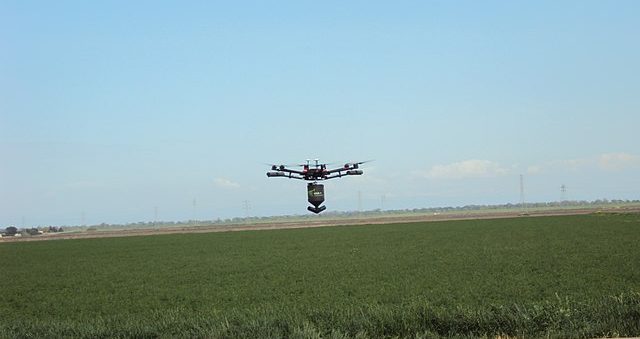Cassava farmers in Region Nine or North Rupununi in Guyana have embraced drone farming to test local soil.
The growers of the tuber in Yakarinta village received the Mavic Mulltispectaral drone from the Minister of Agriculture Zulfikar Mustapha.
Mustapha cited how the equipment will reduce poor yields through alerts on soil conditions and encourage large-scale farming.
Region Nine is a culturally- and agriculturally-important part bordering the diverse Amazon forestry of Brazil. Although cassava is the staple crop here, sweet potatoes and millet also do well with appropriate management.
At the handover ceremony, farmers voiced their intention to diversify to other crops, especially via this precise technology.
Most growers in the region usually cite a lack of insight on what to cultivate next to cassava due to poor soil drainage. Besides, the tuber cuttings they receive regularly from the state sometimes serve as the only planting materials, with no diversification.
This time round, the government has heard their plea and called for diversification by not only providing the drone but cuttings, too.
While pressing farmers to branch out to other crops, the agriculture minister also recommended farm area expansion to boost production.
Mountainous Terrain
According to research, arable land expansion in southern Guyana is under the limitations of the mountainous terrain and flood-prone soil.
However, the indigenous region offers alternative agricultural activities such as hunting to complement subsistence farming. Guyana’s farmers sometimes encounter wildlife on their farms. For this reason, while providing the drone, the minister disclosed future offers of barbed wire and chain links for farmers.
The mountainous terrain is also suited to cattle rearing and poultry farming, two economic activities that drones can help monitor.
Drone’s Purposes
Apart from testing soil pH, analyzing moisture, measuring nutrient content, the drone will also be monitoring crop health. Further afield, it will provide aerial surveys on the status of the livestock such as cattle distribution.
Additionally, the state is planning funding drone-monitored cassava cultivation in several villages with a $5 million Guyanese-dollar ($23,760) kitty.
The 3 million Guyanese-dollar ($14,256) piece of tech is a funding collaboration between Guyana’s government and an international agency.
This therefore illustrates a growing comitment by the South American island nation to suit farming to modern technology. It is for these efforts that Guyana leads regional islands’ agriculture. And as the statistics below indicate, the country is a growing drone hub.
Guyana Drone Farming Statistics
From Guydrones that have been propelling Guyana’s precision agriculture since 2021 to new governmental equipment, drone farming is mapped across Guyana. By end March 2024, Guyana had 706 registered drones with 903 users, per the Civil Aviation Authority (GCAA). This impressive range owes to a clearance and licensing timeline of 28 days, a fraction of the previous 3-month application window.
By what margin do agricultural drones improve Guyana’s farming?
According to a 2018 feature by Kaieteur news media, drones improve Guyana’s agricultural production by 70%. This high improvement accrues to 3-D soil mapping, pest control, aerial spraying and other precision agriculture capabilities.
Have investments in drones boosted Guyana’s farming yields?
Rice cultivation, in particular, has benefited in yield capacity from the use of drones. In 2024, the government announced some $165,000 investment in drones in the rice sector. Paddy yields meanwhile were at 6.6 tonnes a hectare in 2024 up from 5.9 tonnes in 2019 before drone penetration.
